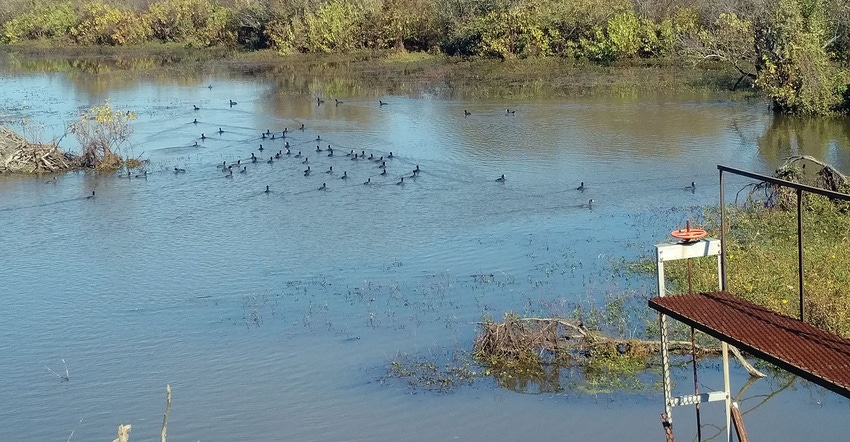April 13, 2020

Lori Dabbs, Hargrove Farms, grew up watching water from alluvial groundwater wells and surface water reservoirs move through canals across her family's farm outside of Stuttgart, Ark. Three wells went dry in the 1970s, so they initiated land improvements through the 1980s and 1990s that increased irrigation efficiency but did not solve their water supply problem.
Rice irrigation costs frequently exceeded $200 per acre when the Dabbs relied on one deep groundwater well. Increasing available surface water reduced pumping costs to $13.15 per acre and soybeans yields increased an average of 13 bushels. "Cost-share programs made those improvements affordable," Dabbs says.
"Through the Grand Prairie Area Demonstration Project (GPADP), we replaced 2 miles of canals with pipelines to transfer irrigation water," Dabbs said during a recent webinar. She explained how cost-share programs provide economic incentives for infrastructure enhancements to increase surface water use as pumping ground water from the region's two aquifers becomes more difficult and expensive.
"We had two projects under the GPADP. We installed a tailwater recovery ditch to capture water runoff from the farm and received a 65% cost-share."
They spread the work over five years and completed it in 2005. "The program cost $306,000, but our out-of-pocket cost was $107,000," Dabbs says. "We also received a $54,000 state tax credit."
Under the second contract, the Dabbs built a 30-acre surface water reservoir and updated additional pipelines. "We added another tailwater recovery ditch and linked all water sources," Dabbs says. "Those improvements allow us to move water in both directions across the farm."
The total cost of the second project, completed in 2002, was $210,000. After a tax credit of $37,000, their out-of- pocket expense was $74,000.
Although those improvements allowed adequate water delivery, it was still a struggle to irrigate because of water shortages. They needed more supplemental surface water and reservoir storage.
Basin Initiative/EQUIP
When the farm's watershed was added to the Mississippi River Basin Initiative, the Dabbs took advantage of another cost-share opportunity through the National Resources Conservation Services' (NRCS) EQUIP program. "We conferred with NRCS engineers and reviewed several scenarios. Some were cost prohibitive, and some were not environmentally feasible," Dabbs says.
"We settled on a plan to create additional surface water storage and pipelines to service an extra 300 acres."
They built a levee around an existing overflow area, adding 450 acre-feet of groundwater storage. All pipelines now tie into the farm's existing water delivery system. "We can move water from the tailwater ditch back to both the old and new reservoirs," Dabbs says. "We finally have a system in place that optimizes our acreage."
The NRCS contract had maximum payouts on each project and a schedule of government cost-shares. Total cost for this project was $262,000. "Dirt work on the new reservoir was capped at $131,000," Dabbs says. "We also incurred some non-covered expenses to retrofit the existing overflow area, so our out-of-contract cost was $121,000."
The Dabbs are looking for a project to retrofit their main surface water storage reservoir after its banks began deteriorating. "Storage capacity in this reservoir is declining because of silt accumulation," Dabbs says.
About the Author(s)
You May Also Like






